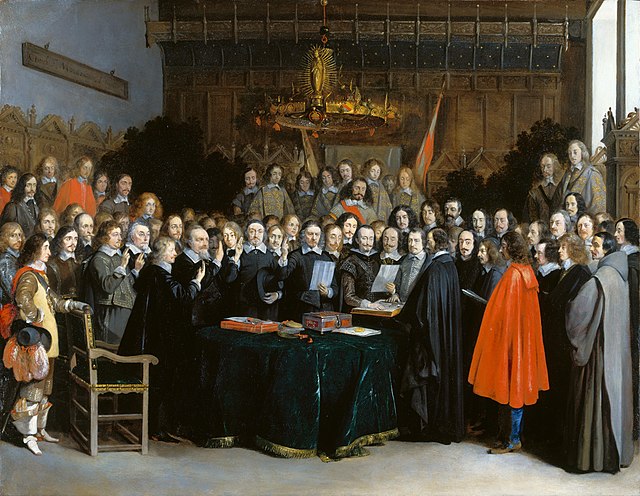The Peace of Münster was a treaty between the Lords States General of the Seven United Netherlands and the Spanish Crown, the terms of which were agreed on 30 January 1648. The treaty, negotiated in parallel to, but not part of, the Peace of Westphalia, is a key event in Dutch history, marking the formal recognition of the independent Dutch Republic and the end of the Eighty Years' War.
The Swearing of the Oath of Ratification of the Treaty of Münster in 1648 by Gerard ter Borch
Detail Westfaelischer Friede in Muenster (Gerard Terborch 1648)
Friedenssaal Münster
Proclamation of the treaty of Munster by Wenceslaus Hollar
The Peace of Westphalia is the collective name for two peace treaties signed in October 1648 in the Westphalian cities of Osnabrück and Münster. They ended the Thirty Years' War (1618–1648) and brought peace to the Holy Roman Empire, closing a calamitous period of European history that killed approximately eight million people. Holy Roman Emperor Ferdinand III, the kingdoms of France and Sweden, and their respective allies among the princes of the Holy Roman Empire, participated in the treaties.
The historic town hall of Münster where the treaty was signed
Dutch envoy Adriaan Pauw enters Münster around 1646 for the peace negotiations.
Sebastian Dadler undated medal (1648), Christina of Sweden, portrait with feathered helmet right. Obverse
The reverse of this medal: Christina of Sweden as Minerva holding an olive branch in her left arm and grasping the tree of knowledge with her right hand.








